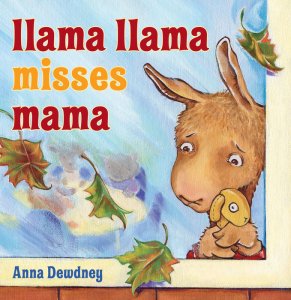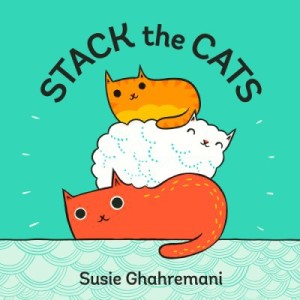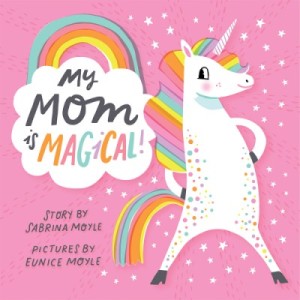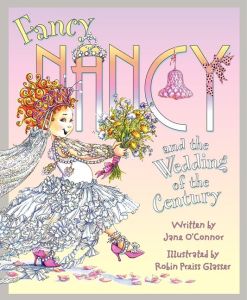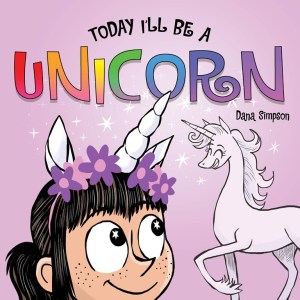Llama Llama Misses Mama by Anna Dewdney. Viking-Penguin Random, 2009. Intended audience: Ages 2-5.
Llama Llama is going to school for the first time today, and he’s nervous after he gets there and meets all the new faces, after he is left by his mama. He spends the morning moping and refusing to play, but after he cries at lunch and is reassured by both his teacher and his classmates, his day takes a turn. He plays with his new friends till the end of the day when his mama returns. The he shows his mama around the school, and they play together. He decides that he loves school. This is an all-too-familiar feeling and scenario for parents and young students, teachers and students-to-be. For that, this is an important book, and Dewdney’s illustrations are as always endearing.
****
Llama Llama Loves to Read by Anna Dewdney and Reed Duncan and illustrated by J. T. Morrow. Viking-Penguin Random, 2018. Intended audience: Ages 3-5.
Published posthumously and completed in her style by her long time partner Reed Duncan, this school time story teaches lessons about the alphabet and the words that they can spell and the sentences that are made by words, the songs, the books. This seemed a little longer, a little more didactic than some of the other Llama Llama books with its vocabulary words and its recitation of the alphabet. It’s more picture book than a primer though. Llama Llama is growing up, and he’s less in need of reassurance of his mother’s love. Now there are other lessons to be learned. The text still has the rhythm and rhyme of Dewdney’s earlier works. The illustrations seem somehow a little more cartoonish, though it is clear that J. T. Morrow tried to stay true to the character of Dewdney’s earlier works.
***
Are You My Mother? by P. D. Eastman. Penguin Random, 1988. First published 1960. Intended audience: Ages 3-7.
This is not the first time that I read this story. I don’t think it’ll be the last. But somehow I’ve never read and reviewed it or rated it on Goodreads. A baby bird hatches while his mother is away, and he knows that his mother should be there when he hatches, so he goes off to look for her—falling right out of the nest. He goes to a number of animals and objects, questioning each about being his mother, but always getting the negative answer, getting more and more desperate with each negative. He visits a kitten, a dog, a cow, a boat, a plane, and finally a Snort. The Snort is the only one to help him find his mother—although the baby bird finds the Snort very scary. The Snort picks him up in its claw and puts him back into his nest, where his mother is waiting, wondering where he has been. The story is told in rhyme with a lot of repetition.
You could probably read into this one; I’m sure it has been done. (Actually there are fewer scholarly articles readily available on Google Scholar than I would have expected, and most of those seem to be about adoption law and children’s rights and possibly only obscurely reference the book; I didn’t buy access to the articles to check.) The baby bird seeks family in all kinds of critters but cannot find it; none of them look like him. He doesn’t seem to believe that family necessarily needs to look alike, but the animals are all against interspecies families and the objects—except the Snort—all reject him with their silence. The only one that the baby bird does not believe can be his mother is a wheel-less, broken, junked car, seeming to suggest that he believes that what is necessary in a mother is locomotion, a certain spark of life—perhaps this is because his mother did leave so he knows that she was capable of self-transportation, but perhaps there is a comment there on the necessity of a mother to be alive. That the baby bird refuses to entertain the idea that his mother could be inanimate, no longer capable of locomotion, no longer possessing a lifespark is just heartrending—because some must accept that, and he is too young to even entertain the idea.
—
Stack the Cats by Susie Ghahremani. Abrams Appleseed-Harry N. Abrams, 2018.
I really enjoyed this story about cats and math. It’s counting, addition, division, and subtraction. Three cats stack, but four and five cats endanger the pile, so six cats become two stacks of three each. After ten cats become just too many, the cats begin to go away. The illustrated cats are delightfully round fluffs with small mouths and a wide variety of colors and patterns. There’s a sort of singsong rhythm to the simple text. The story ends with an invitation stack the cats creatively, to invent your own math solutions with the cats—of which by the last page there are more than ten—I count 21!
*****
My Mom is Magical by Hello!Lucky and Sabrina Moyle and illustrated by Eunice Moyle. Harry N. Abrams, 2018.
“Mom,” portrayed here as a rainbow-maned and –tailed and rainbow-speckled unicorn, is described in a set of creative comparisons that rely on alliteration: “sillier than a band of bananas,” “sweeter than a cloud of cotton candy.” There’s not a lot of story to it. Pages alternate between pages of text that pops from the page between a frame of illustrations like an affirmation poster and pages of the unicorn illustrated in silly poses and fun costumes. It would make a sweet gift, an alternate to a card for a mother.
***
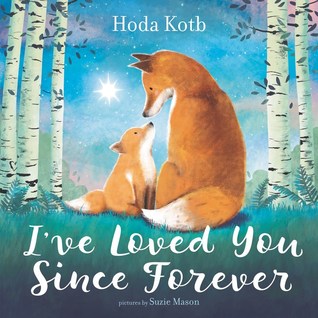
I’ve Loved You Since Forever by Hoda Kotb and illustrated by Suzie Mason. HarperCollins, 2018.
The illustrations are the star of this short picture book about a parent’s and child’s love. “Before the moon lit up the night and elephants roamed free, there was you and there was me.” Via a bunch of nature-related forevers, Kotb implies the eternity of souls and suggests that a parent and a child await the time when their two “stars” become not separate “you and I” but “we.” I don’t know if she intended to put that much philosophy in the book, but it’s there. It’s a fine sentiment and statement, but there are many variations on this same theme out there, and frankly it’s a drop in a big puddle of sentiment. It takes a lot to stand out from that puddle.
***
Fancy Nancy and the Wedding of the Century by Jane O’Connor and illustrated Robin Preiss Glasser. HarperCollins, 2014. Intended audience: Ages 4-8.
Bree has been to lots of weddings before, but Nancy has not. Bree and Nancy imagine and dream that the wedding will be very fancy, but Uncle Cal wants everything kept secret from the girls until right before the event, so even as the family packs up to go to meet Cal and Dawn, his bride-to-be, Nancy knows nothing of what they have planned for the wedding—not even whether or not she will be the flower girl, though she is almost certain that she will be. Nancy wakes up from her dream of a fancy hotel wedding to find that the family has arrived at a humble cabin the wilderness. Nancy is at first very disappointed, though no one else seems to be, but there’s a party beforehand, and Dawn is kind to Nancy and even borrows a crown from her for the wedding so that she will have something old, something new, something borrowed, and something blue. In the end, even Nancy agrees that this nontraditional wedding, without any of the frills that she expected, is the most “glorious.” As with most Nancy stories, this was a little long for a story time, but I enjoyed the story nonetheless, and it was a nice change to have a wedding tale about a wedding free from the traditional trappings. I had a group this week for story time too that could sit through the longer stories, so it worked out.
****
Today I’ll Be a Unicorn by Dana Simpson. Andrews McMeel, 2018. Intended audience: Ages 3-5.
This book uses characters from Dana Simpson’s graphic novel series, Heavenly Nostrils, but the story and the characters are fairly universal, really. A young girl wants to be a unicorn. She dons a tail and a headband with horse ears, a horn, and a crown of flowers. With her unicorn friend, she prances through the meadow and sits atop a rainbow. But unicorns don’t eat pizza. So maybe tomorrow she will be a unicorn. There’s perhaps not much original about this story; it’s been done before with other animals—and I think even with pizza. I’m not sure how much I care about the originality. The story remains cute, and Simpson’s illustrations are delightfully whimsical.
****
These reviews are not endorsed by any of the authors or publishers or anyone else involved in the making of these books. They are independent, honest reviews by a reader.

